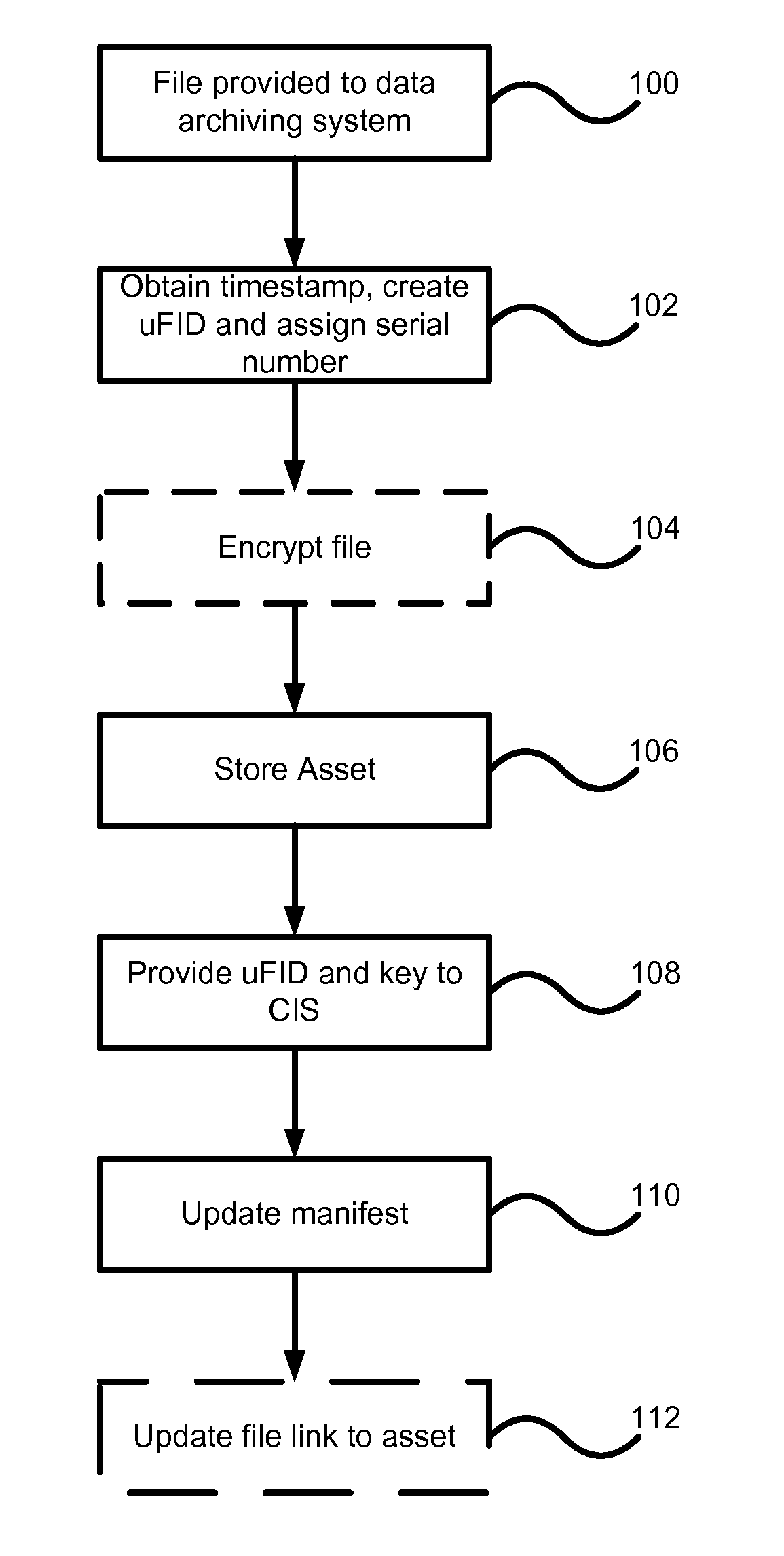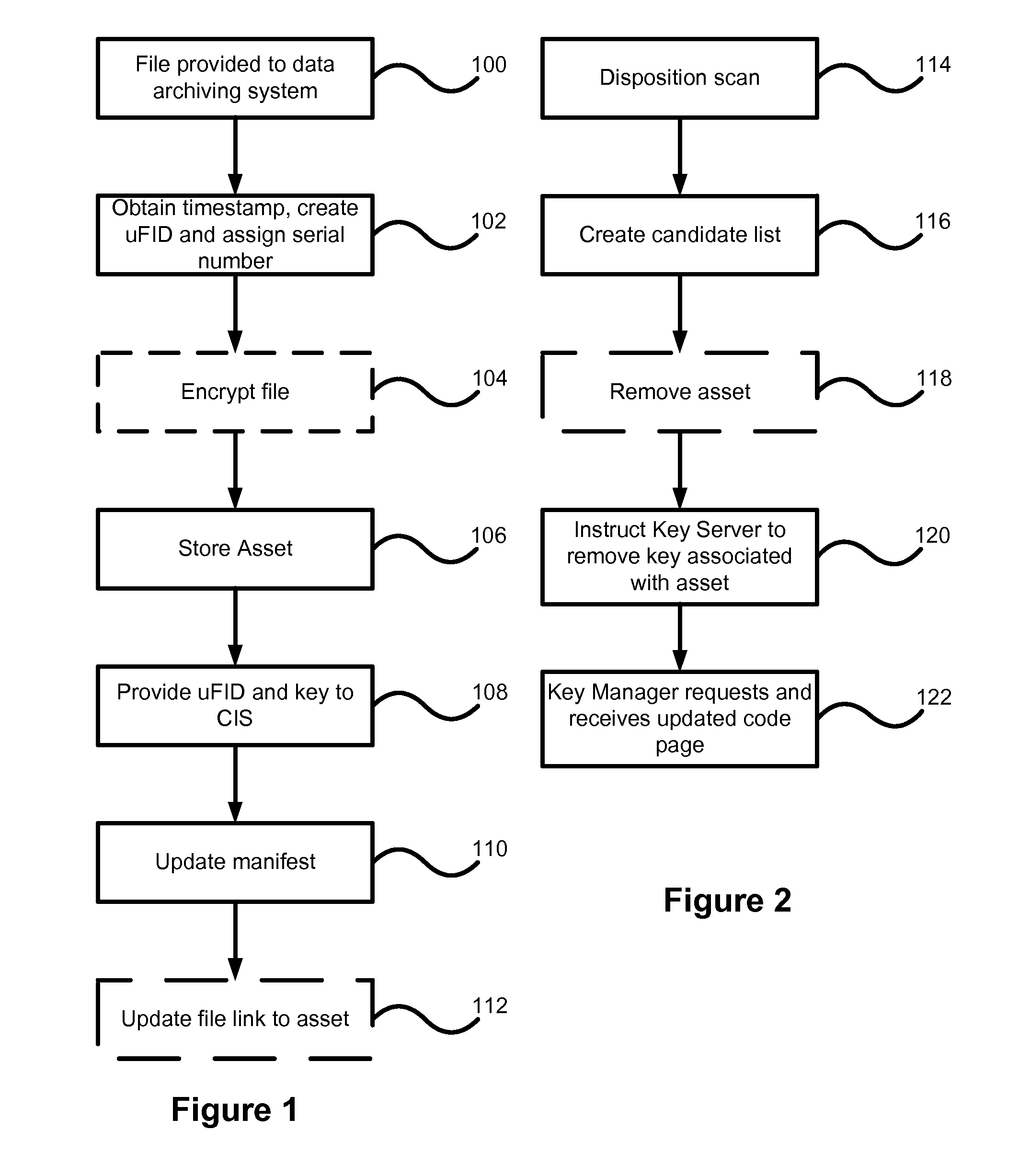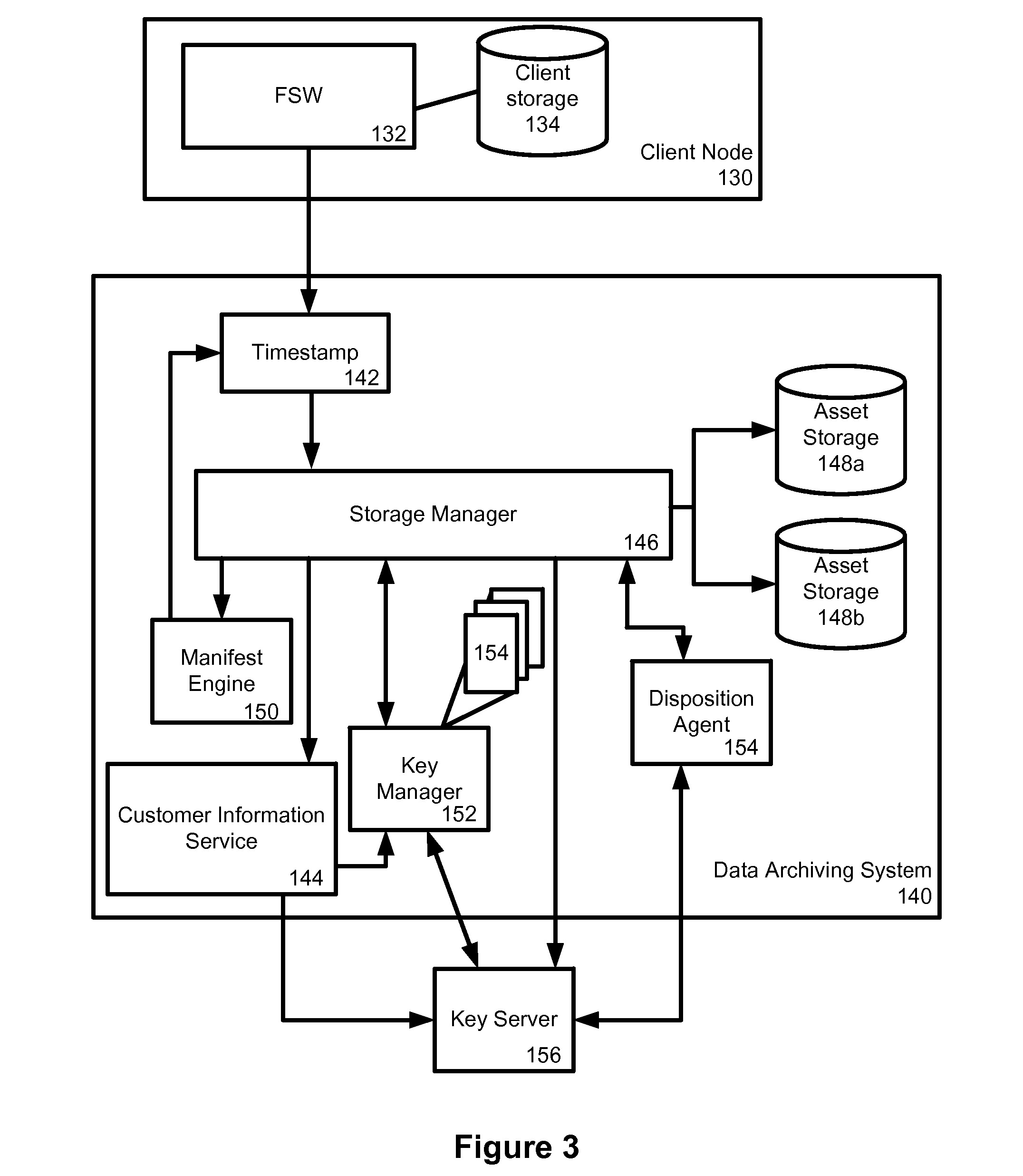Data archiving system
a data archiving and data technology, applied in the field of file storage and management, can solve the problems of requiring indefinite retention of documents, unable to allow the destruction of backups to allow the required deletion, and difficult or impossible to make changes to data
- Summary
- Abstract
- Description
- Claims
- Application Information
AI Technical Summary
Benefits of technology
Problems solved by technology
Method used
Image
Examples
Embodiment Construction
[0028] Generally, the present invention provides a method and system for long term archiving of files as digital assets.
[0029] Elements of the system described below can be implemented in a modular fashion without departing from the present invention. Thus features can be added and removed from the system without necessarily departing from the intended scope of the present invention.
[0030] The system of the present invention provides the ability to have storage profiles based on any number of criteria including the user that creates the file, a directory that the file is placed into, and other criteria that will be apparent to those skilled in the art.
[0031] To allow data security to be addressed, the present invention makes use of data encryption on a unique key per file basis. When a file enters the data archiving system of the present invention, it is encrypted and stored as an asset. A unique file identifier (uFID) is calculated from the contents of the asset, and is maintain...
PUM
 Login to View More
Login to View More Abstract
Description
Claims
Application Information
 Login to View More
Login to View More - R&D
- Intellectual Property
- Life Sciences
- Materials
- Tech Scout
- Unparalleled Data Quality
- Higher Quality Content
- 60% Fewer Hallucinations
Browse by: Latest US Patents, China's latest patents, Technical Efficacy Thesaurus, Application Domain, Technology Topic, Popular Technical Reports.
© 2025 PatSnap. All rights reserved.Legal|Privacy policy|Modern Slavery Act Transparency Statement|Sitemap|About US| Contact US: help@patsnap.com



